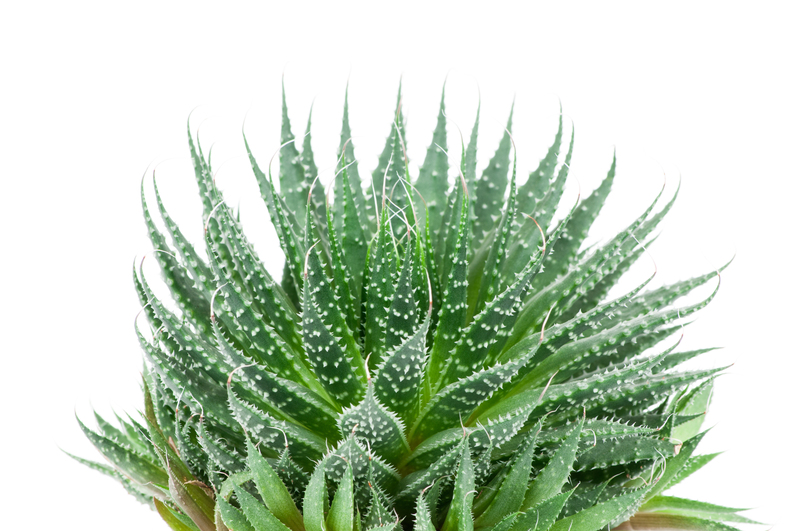First Steps in Reviving a Forgotten Garden Space
Posted on 03/09/2025
First Steps in Reviving a Forgotten Garden Space
Has your backyard or side plot become a tangled web of weeds and brambles? You're not alone--reviving an abandoned garden is a rewarding journey that breathes life back into both land and home. Whether you've just bought a property with a neglected outdoor area or simply want to reclaim a once-loved green patch, starting this project may seem daunting. However, with careful planning and a touch of creativity, you can transform any forgotten garden space into a lush retreat.

Why Revive a Neglected Garden?
Before digging in--why bother reviving an overgrown, forgotten garden area? There are many compelling reasons to restore your green spaces. These include:
- Boosting Property Value: Well-kept gardens significantly increase home appeal and overall value.
- Enhancing Mental Well-being: Time spent in nature has proven benefits for reducing stress and improving mood.
- Producing Your Own Food: Revived gardens can provide vegetables, herbs, and fruit--fresh and organic.
- Supporting Local Biodiversity: A healthy garden attracts pollinators, birds, and beneficial insects.
Now that you're motivated, let's break down the first steps for restoring a neglected garden in a way that guarantees lasting results.
Step 1: Observe and Assess the Forgotten Space
The foundation of all successful garden makeovers is a thorough site assessment.
- Walkthrough Inspection: Spend time carefully walking through your overgrown outdoor area. Take notes and photos.
- Look for remains of pathways, borders, garden beds, or previous landscaping features.
- Identify plants: Make a list of any existing plants, even if they're hidden among weeds. Some may be worth saving!
- Notice problem spots: Are there areas of standing water, dead trees, or evidence of pests?
Don't rush this process. Understanding the current layout will inform all your future revival steps.
Make a Plan
Sketch a rough map of your garden space.
- Mark sun and shade spots, obvious weeds, patches with healthy soil, and any remnants of the old garden.
- Note areas needing the most urgent attention, such as dangerous debris or aggressive invasive growth.
- Imagine how you would like to use the space--a veggie plot, a flower bed, a sitting area, or maybe all three?
Step 2: Site Cleanup--Clearing the Debris
Revitalizing a neglected garden always starts with a major cleanup.
- Remove trash and debris: Pick up any litter, rotting wood, or broken garden ornaments.
- Prune and cut back overgrowth: Use loppers, pruners, and saws to trim away dead tree branches, brambles, or overgrown shrubs.
- Clear weedy patches: Pull up weeds by the root to prevent regrowth. For stubborn areas, consider sheet mulching.
- Mow or strim high grass: Cutting down tall grass helps you see what's underneath and make further cleanup easier.
Safety Tips During Cleanup
- Wear sturdy gloves, boots, and long sleeves to protect from thorns and hidden hazards.
- Be mindful of wildlife--overgrown gardens sometimes shelter small animals or insects.
- Use caution with tools and dispose of debris responsibly (compost organic material if possible).
Step 3: Assess Soil Health and Structure
With the bulk of debris removed, it's time to investigate soil quality--the foundation for any successful garden revival. Take these steps:
- Test the soil: Purchase a simple soil test kit to assess pH, texture, and fertility. Many forgotten gardens have compacted or depleted soil layers.
- Check for drainage: After a rainfall or by running a hose, see how quickly water soaks in or if it pools in certain areas.
- Add organic matter: In most cases, enriching the soil with compost, manure, or aged leaf mold is essential to restore structure and nutrients.
If you discover contaminated soil (such as from previous construction, oil, or chemical use), seek professional advice before planting anything edible.
Break Up Compacted Soil
Many abandoned garden spaces suffer from hard, compacted earth.
- Loosen the soil with a garden fork or broadfork--avoid turning it completely to preserve beneficial microorganisms.
- Add a mulch layer of wood chips or straw to suppress future weeds and protect restored soil moisture.
Step 4: Identify and Save Valuable Plants
While some overgrown garden plants are weeds, other survivors may be hidden gems--old roses, fruit trees, or rare perennials. Take the time to:
- Research plant identities: Use plant identification apps or local gardening groups to learn what's growing.
- Prune cautiously: With careful trimming, many established shrubs or trees can recover spectacularly.
- Relocate or divide overgrown perennials: This can refresh crowded beds and allow healthy regrowth.
Preserving mature plants can give your revived garden an immediate sense of age and character.
Step 5: Plan Your Dream Garden Layout
Now comes the creative part--imagining how your restored green space will be used and enjoyed. Consider:
- What activities will take place? Entertaining, relaxing, growing food, or supporting wildlife?
- Design for function and beauty: Layer tall and short plants, plan paths for access, and include a mix of annuals and perennials.
- Choose low-maintenance plants: Especially in the first year, select disease-resistant or native varieties.
Sketch your new layout on paper or use an online garden planner. This stage is also the perfect time to plan for new beds, seating areas, or even water features.
Smart Hardscaping Choices
- Add or restore simple paths using mulch, gravel, or stepping stones.
- Use salvaged bricks, rocks, or old timber to edge beds or build raised gardens.
- Install a small bench or recycled garden furniture for instant charm and usability.
Step 6: Reintroduce Plants and Start Planting
With the design sorted and soil refreshed, you can move on to planting your revived garden. Remember to:
- Start small: Tackle one section at a time to avoid becoming overwhelmed.
- Mix quick-growing annuals and slow-growing perennials for quick color and future structure.
- Mulch newly planted beds to conserve moisture and reduce weeds.
- Water deeply and regularly as young plants establish roots.
Low-Cost, High-Impact Plants for Restoration
- Wildflowers and pollinator plants
- Herbs like rosemary, mint, and thyme (also naturally pest-resistant)
- Hardy vegetables--lettuce, beans, radishes
- Native shrubs or fruit bushes for year-round appeal
Step 7: Maintain, Enjoy, and Observe
The early weeks of restoring a neglected backyard or garden set the tone for long-term success. Regular maintenance is vital:
- Weed frequently: Especially in the first year, be vigilant to prevent weeds from reestablishing themselves.
- Monitor for pests and disease: Healthy soil and diverse planting will help keep them in check naturally.
- Adjust your plans: Take notes on what flourishes and what struggles--gardens are always evolving spaces.
Finally, take the time to enjoy your revitalized garden space. Invite friends, create a quiet nook for reading, or simply watch the bees and butterflies return. This is the true reward of transforming a forgotten garden area into a haven once again.
Tips for Sustainable Garden Restoration
- Reuse materials: Upcycle old bricks, wood, or stones into garden features and paths.
- Compost green waste: Turn garden debris into rich material for ongoing mulching and planting.
- Prioritize native plants: These generally require less water and care, and support more local wildlife.
- Limit chemical use: Start with organic pest control and fertilizers to ensure healthy soil and biodiversity.

Common Challenges in Garden Restoration--And How to Overcome Them
Dealing with Invasive Weeds
Some neglected gardens are overrun with bindweed, couch grass, or other persistent weeds.
- Stay consistent: Remove weeds by the root and repeat as necessary--persistence pays off.
- Mulch heavily: Covering soil suppresses weed regrowth and keeps conditions moist for desired plants.
Working with Limited Time or Budget
- Tackle the garden in phases, focusing first on the areas you use the most.
- Seek out free plants from friends, plant swaps, or local gardening groups to stretch your budget.
Unsure Where to Start? Ask for Help
- Many communities have volunteer days, gardening clubs, or extension offices offering advice and support.
- Online forums can provide plant identification, troubleshooting, and design inspiration for any garden revival challenge.
Final Thoughts: Your Journey to a Renewed Garden Begins Now
Rescuing a neglected or forgotten garden space can be a transformative experience, both for your property and your well-being. By following these first steps in garden restoration--surveying, clearing, amending, planning, planting, and maintaining--you lay the groundwork for a thriving outdoor sanctuary.
No matter the size or state of your forgotten plot, remember: gardens are resilient. With patience and basic know-how, you can revive any outdoor space and watch it bloom anew.
Stop waiting and start digging--the new chapter of your cherished garden awaits!

